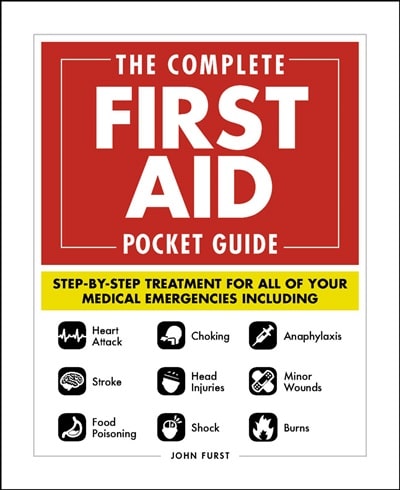There’s no denying that panic attacks are scary. If you witness someone having one, it’s important to react and help them in the proper way. John Furst, author of THE COMPLETE FIRST AID POCKET GUIDE, walks you through a guide to panic attacks and hyperventilation.
Panic Attacks and Hyperventilation A panic attack occurs when a victim experiences sudden intense anxiety, usually accompanied by physical symptoms such as hyperventilation (breathing too fast), sweating, palpitations (fluttery or rapid heartbeat), and muscle cramps. Panic attacks can be very frightening and may strike without warning. The physical symptoms associated with a panic attack can be severe; these symptoms often intensify the victim’s anxiety state, and the panic attack worsens.
 Hyperventilation, or overbreathing, is a common feature of panic attacks. In severe cases, this canlead to numbness or clawing of the hands and tingling of the lips. This occurs because overbreathing affects the level of carbon dioxide in the blood, which causes the symptoms of tingling, numbness, and hand clawing. These symptoms can make the victim more anxious and therefore worsen the hyperventilation and panic attack. Always remember that hyperventilation may be due to another medical problem (for example, an acute asthma attack or a heart attack). If you are worried the victim is having a medical emergency, then call EMS.
Hyperventilation, or overbreathing, is a common feature of panic attacks. In severe cases, this canlead to numbness or clawing of the hands and tingling of the lips. This occurs because overbreathing affects the level of carbon dioxide in the blood, which causes the symptoms of tingling, numbness, and hand clawing. These symptoms can make the victim more anxious and therefore worsen the hyperventilation and panic attack. Always remember that hyperventilation may be due to another medical problem (for example, an acute asthma attack or a heart attack). If you are worried the victim is having a medical emergency, then call EMS.
People who have regular panic attacks may take antianxiety medication or carry medication to use when a panic attack strikes. Let’s take a look at what you can do to help a victim of a panic attack.
First Aid Treatment for Panic Attacks and Hyperventilation:
- Remain calm and reassuring.
- Ask the victim if there is anything you can do to help (for example, by removing a trigger of the panic attack).
- Focus the victim’s breathing—talk the person through taking deep, slow breaths to slow down hyperventilation.
- Provide lots of reassurance and maintain the victim’s dignity (for example, ensure any bystanders move on).
- Call EMS if the victim loses consciousness, she appears to be having severe difficulty breathing, or you suspect she is having an asthma attack.
Check out THE COMPLETE FIRST AID POCKET GUIDE by John Furst for more first aid and emergency tips.
***
Tips on Life & Love: 5 Outdoor First Aid Tips
***
Excerpted from The Complete First Aid Pocket Guide by John Furst. Copyright © 2018 by the author. Used by permission of the publisher. All rights reserved.
Photo by Francisco Moreno on Unsplash.
The post Remain Calm: A Guide to Panic Attacks and Hyperventilation appeared first on Tips on Life and Love.



